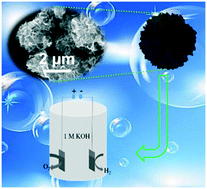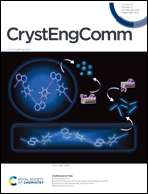Ultrathin 2D flower-like CoP@C with the active (211) facet for efficient electrocatalytic water splitting†
Abstract
Designing non-noble-metal electrocatalysts with high catalytic activity and stability towards hydrogen evolution reaction is vitally necessary for the demands of renewable and clean energy sources. Herein, an advanced water reduction electrocatalyst with a two-dimensional (2D) morphology based on CoP embedded on the surface of nanocarbon (CoP@C) is fabricated, which is derived from 2D Co-MOF by low-temperature phosphorization. Benefiting from the unique 2D morphology as well as more exposed (211) facet, such electrocatalyst exhibits superior catalytic activity in both alkaline and acid media in comparison to the traditional three-dimensional (3D) structure CoP@C with the overpotentials of 127 and 236 mV for HER at the current density of 10 mA cm−2, respectively. Density functional theory simulations unveil that the binding energies of the adsorbed intermediate species become more appropriate on the (211) facet compared with that on the (011) facet. This could improve the dissociation of H2O and desorption of H*, and thus facilitate the electrocatalytic activity. Moreover, the 2D electrocatalyst demonstrates enhanced electrocatalytic oxygen evolution reaction performance compared with its 3D counterparts. When the 2D CoP@C is employed as both the anode and cathode, a potential of 1.67 V is required to achieve the 10 mA cm−2 current density. In addition, it still exhibits good durability and even continued to work for 50 h.

- This article is part of the themed collection: Nanomaterials


 Please wait while we load your content...
Please wait while we load your content...